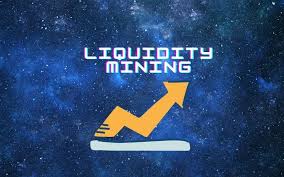Content
One of the primary reasons for such a high-end shift in focus is that cryptocurrencies like bitcoin are expensive. Besides that, it is not financially viable for many other users, as mining is a highly technical sector. Most coin mining is grown in extensive storage facilities where renewable power is available. What this means is that mining for cryptocurrencies is a matter of competing in a highly competitive race against other participants, all hoping to land the winning ticket and grab a payout. However, the creation of a cryptocurrency isn’t as straightforward as simply printing a banknote. Fiat currencies are highly regulated and operate under a central authority, which is responsible for issuing new notes and destroying older ones. Bitcoin and most other cryptocurrencies on the market are generated through a process known as ‘mining’.

The properties of the hash mean it becomes like a digital wax seal. It verifies that the information in the block hasn’t been tampered with. If anyone does try to change the block then it won’t match, so everyone would know that it was a fake. There is no rational basis for the valuations of most cryptocurrencies.
Practical Examples Of How Blockchains Will Be Used In Legal Firms
According to Forbes, analysts at Credit Suisse have a lower estimate for global electricity consumption from bitcoin mining at around 20 TWh, although still on a par with Ireland. Digiconomist produces an interesting Bitcoin Energy Consumption Index which tracks the estimated annual electricity consumption of global bitcoin mining.
The index is based on global bitcoin mining revenues multiplied by the % of the revenue that is estimated to be spent on electricity (about 60%). To mine bitcoin mining you are going to need a bitcoin wallet, a mining rig, access to a mining pool, and mining software. Once you have all that you are going to need electricity – a lot of electricity. This article is not about industrial scale bitcoin mining.
Where do I buy bitcoins?
Best Places to Buy Bitcoin in 2021Best Overall: Coinbase.
Best for Beginners: eToro.
Best for No Cost: Robinhood.
Best Instant: CoinMama.
Best for Interest and Borrowing: BlockFi.
Best for Privacy: Bisq.
Bitcoins don’t exist physically and are only an arrangement of virtual data. It can be exchanged for genuine money, and are broadly acceptable in most countries around the globe. There is no central authority for Bitcoins, similar to a central bank that controls the monetary policy. Alternatively, developers solve complex puzzles to support Bitcoin transactions. Bitcoin was created under the pseudonym Satoshi Nakamoto, who announced the invention, and later it was implemented as open-source code. When an individual sends a couple of bitcoins to another individual, this data is communicated to the peer-to-peer bitcoin network.
Is Bitcoin Mining Worth It?
So, cryptographic hashing turns into a decent method to apply the Bitcoin “Proof-of-work” . Ratio between the cost of mining and the total transaction volume Ct/Vt on daily basis. The band is the region between the first and tenth decile and the center line is the mean value, which is 0.15% for oil and 0.21%. During the last 10 years the Bitcoin network activity has also increased with increasingly larger amount of money transferred daily through the network. Figure 5 reports the total transferred value per day in the Bitcoin network specified in USD. One can see that the total daily volume of transactions has grown from about one thousand USD in 2010 to nearly one billion USD in 2020 for an increase by six orders of magnitude.
The concept of a Bitcoin transaction is to transfer the responsibility of an amount of Bitcoin address. If we consider a block to mine first, we need to collect the new transactions into a block, and then we hash the block to form a 256-bit block hash value.
- One individual may simultaneously transmit two transactions, sending similar coins to two distinct parties on the network.
- By definition, CPU Mining is a term in use for processor-based cryptocurrency mining.
- Cryptocurrency mining platforms and rigs may receive phishing content via email.
- Electronic wallets stores our security keys on the web, on a computer, limited by someone else and coupled to the Internet.
Bitcoin mining refers to the process of authenticating and adding transactional records to the public ledger. The public ledge is known as the blockchain because it comprises a chain of the block. The reward for mining Bitcoin is lessened by 50 percent every four years. If BTC were initially mined in the year 2009, mining one black would get you 50 bitcoin. In the year 2012, this was halved to 25 bitcoin, and by the year 2016, this was 12.5 bitcoin. On the 11th of May 2020, the reward dropped to 6.25 bitcoin.
A. Virtually all the crypto apps on the Play Store either allow you to manage the remote cloud mining tasks, or pay out rewards and giveaways in some other fashion. WOZX token is powering energy efficiency savings via the EFFORCE trading platform. Apple co-founder Steve Wozniak and a visionary team backs it. It’s also leading to a considerable amount of fraud in the sector. Buying high-quality Bitcoin mining equipment has always been risky.
TheEnergyShop.com is a free, independent and impartial energy price comparison service. We can help you switch gas, electricity or dual fuel supplier anywhere in Great Britain. You can review over 50,000 up to date energy prices fast and securely on one single site.
16 Of 40 Results For “bitcoin Mining Hardware”
Many times, a bitcoin wallet will even take advantage of a cell phone? s near-field communication aspect, empowering us to tap the mobile phone against a reader and pay bitcoins without entering any data at all. A bitcoin customer has to download the whole bitcoin blockchain, which is always developing and is multiple gigabytes in size. A ton of mobile phones wouldn’t be able to hold the blockchain in their memory. In such a case, they can use alternative options, and these mobile users are repeatedly designed with simplified payment verification in mind. They download a confined subset of the blockchain and depend on other trusted nodes in the bitcoin system to ensure that they have the precise data. Mycelium is the example of mobile wallets that comprises of the Android-based Bitcoin wallet.
When we send Bitcoin, an individual data structure, namely a Bitcoin transaction, is made by your wallet customer and afterward communicate to rebroadcast the transaction. If the operation is valid, nodes will incorporate it in the block they are mining, within minutes, the transaction will be included, along with other transactions, in a block in the blockchain. Finally, the receiver can see the transaction amount in their wallet. This technology remains similar to purchasing something with virtual currency. However, one advantage of Bitcoins is that the arrangement remains unidentified. The personal identity of the sender and the beneficiary remain encrypted. It is the primary reason that’s why it has become a trusted form of money transaction on the web.
To mine cryptocurrency with the MinerGate app, you need a compatible device. You’ll also need around 30MB of free space on your device. In this guide you’ll learn how to master the MinerGate Android app to make money through mining. After going through the simple setup process, you can use the built-in calculator to see how much you can earn every day. While this won’t make you rich overnight, it’s a great way to make small amounts of money if your Android smartphone has a little spare processing power.
In general, BTC utilization and mining are legal in various parts of the globe. Well, Bitcoin mining legality depends totally on your location. The idea of BTC can threaten the supremacy of fiat currencies as well as government control over the monetary markets.

Its “proof of work” system requires huge amounts of power, but there are other decentralised technologies being developed. In fact, the most popular Bitcoin processors, Antminers made by China’s Bitmain, are expected to be out of stock until August due to demand and are now selling for more than $3,700 each having doubled in price. Such hardware could ultimately become a problem of its own as e-waste mounts, says De Vries. Every ten minutes a ticket is drawn, and lucky miners will have the winning ticket,” says, Michel Rauchs, of the Cambridge Centre for Alternative Finance. Electronic wallets stores our security keys on the web, on a computer, limited by someone else and coupled to the Internet. Various online services are accessible, and the network to mobile and desktop wallets copying our address among various devices that we own. One significant advantage of online wallets is that we can access them from anywhere, in spite of which device we are using.
A. Mining crypto puts the processor and other components in the device under extreme stress, and also drains the battery. The process of Bitcoin mining ensures Bitcoin remains trustworthy and reliable, but as a way to make money, it’s becoming increasingly challenging for the average person. The mining arms race has driven up the price of equipment while pushing down the chances of success. It remains to be seen how much longer the tech industry can chase returns from Bitcoin mining. With so many machines competing for an increasingly small return, mining is becoming a lottery. The first Bitcoin specification was published in 2009 on a cryptography mailing list by Satoshi Nakamoto.
But it doesn’t tell us much to look at one nation or one city. Bitcoin mining is being increasingly heavily criticised on the grounds that it increases global carbon emissions. Famous electric car firm Tesla Motors has come under fire recently, for instance, for buying $1.5bn worth of bitcoin and planning to accept the cryptocurrency as payment. It is suggested that the move undermines the firm’s green credentials. De Vriesconservatively estimates the energy demands of Bitcoin could double in 2021. As the cryptocurrency provokes more mainstream interest, its miners are going to be digging deeper.
Who pays miners in Blockchain?
So far, the vast majority of miners’ earnings comes from the 50 BTC per block rewards, with a tiny fraction coming from the transaction fees paid by the people creating transactions. So to answer your question, nobody pays the vast majority of the cost; it is created out of thin air as the reward for mining a block.
Over the entire period, the mean value of Ct/Vt is 0.15% with the first decile being 0.02% and tenth decile being 0.4%. Using regional electricity prices to calculate the mining costs shows a similar pattern over time, though on a slightly higher level after 2014 with the mean ratio being 0.21%. Note that this band of oscillation is within one order of magnitude whereas the underlying quantities Ct and Vt vary of six orders of magnitude during the same period. If we limit our analysis to the last period after the end of 2017, we obtain a mean ratio of 0.3% and D1, D10 deciles with values equal to 0.1 and 0.4%. After the initial investment in the hardware, there are running costs to Bitcoin mining.
Bitcoin Mining: Everything You Need To Know
Yes, there are many other Proof of Work cryptocurrencies that can be mined, and most of them are more accessible to the average enthusiast than Bitcoin. The number of Bitcoins generated per block halves every 210,000 blocks, which is roughly every 4 years.
To maintain the blockchain’s smooth operation and its capacity to process and validate transactions, a Bitcoin network strives to have a block generated every 10 minutes or so. While it may take longer to solve the respective hash problem for ten miners vs. one million miners, this is not unusual in the physical world. In other words, Bitcoin miners are minting fresh coins for themselves. To offer an example, as of November 2020, there was approximately 18.5 million bitcoins in circulation. 1 Aside from the coins minted by the block header , any one of those Bitcoin came into existence because of miners. But, since no miners ever had some new bitcoin, Bitcoin will still function and remain usable.
The reason miners did the complicated proof of work process above is exactly to solve this problem. The cryptographic puzzles that the software has to solve get harder as the blockchain grows bigger and more bitcoins enter circulation. The puzzles require the computers to go through a lot of extra steps to create a hash, just to make sure new bitcoins can’t be produced too fast. This doesn’t involve digging with picks and shovels – the mining is done by powerful computers running special software to solve complex maths problems. These calculations are used to verify transactions and to create new blocks which are added to the blockchain. It’s not too difficult to generate an estimate of how much energy Bitcoin mining consumes, because the nature of the blockchain means that anyone can see new blocks being created. Bitcoin mining has even been blamed for blackouts in Iran, where the power consumption of cryptocurrency mining firms has increased demands on its electricity network.
Similarly to the blockchain, the network user, or ‘node’, also holds a record of every transaction. As it is notified, the transactions are validated with a series of checks in order to make sure they are legitimate.









